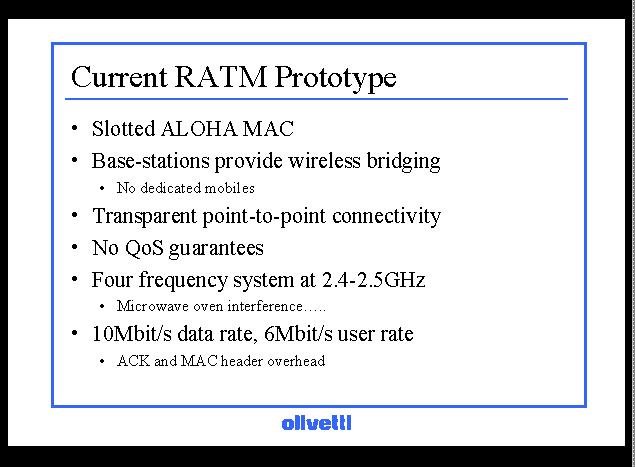 |
 |
Notes:
I will now talk about the current RATM prototype. This has been operational for around a year.
The current RATM prototype uses a slotted ALOHA MAC.
An ALOHA slot consists of single ATM cell with an immediate acknowledgment. This was implemented as a stop-gap measure so that the software architecture could be progressed. We are currently developing a more appropriate MAC which I will outline later.
We do not currently have a dedicated mobile. Base-stations provide wireless bridges between segments of the fixed ATM network. One base-station is connected to the wired network and another is used to connect a device representing a mobile. The standard demo we use is an X-server being displaying video on a networked ATM framestore with an LCD display.
The system currently uses the lightweight signaling protocol developed at Cambridge University Computer Lab and ORL, which provides similar semantics to UNI signaling but is less flexible and much less complicated.
Devices are transparently connected running exactly the same software as for wired connection.
Currently we dont make any QoS guarantees, mainly due to the unpredictable performance of the MAC protocol.
We use the ISM band at a transmission power of around 20mW, the radio is treated as DSSS as far as the regulations are concerned.
The current system has a raw bit-rate of 10Mbit/s and a user throughput of around 6Mbit/s.